The weather station can provide users with comprehensive weather information over the years. Regular maintenance of weather stations is an important operation to ensure measurement accuracy and extend service life. If performed regularly, performing maintenance will be a relatively easy task. The weather station equipment has been working outdoors for a long time. After severe weather, users are advised to check the status of the weather station. For example, check whether the anemometer is intact and can rotate freely throughout the winter, and check that there are no leaves, bugs, or waste paper in the rain gauge? Are there any residues of sand on the solar panels?
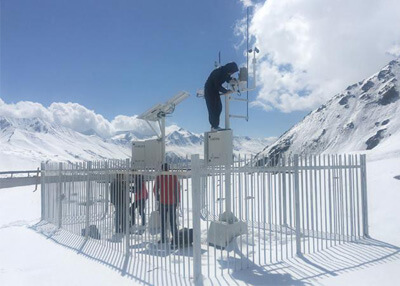
Disclaimer: Maintenance procedures will vary according to the brand and model of the weather station. Besides, some weather station sensors and components are precision technology. Care should be taken when cleaning and maintaining. For details, please refer to the user manual of the particular weather station sensor. In addition, all weather stations are different. This is a general guide and is not specific to your specific weather station model.
Weather station temperature sensor shield
The temperature and humidity sensor module is installed inside the solar radiation shield. During the natural gas flow, it enters through the louvered vents around the radiation shield and is measured by the temperature and humidity sensor. Therefore, there is almost no need for regular maintenance. However, when installing in windy and sandy areas, after the storm, you need to wipe off the residual sand around the radiation shield with a soft wet wipe. Secondly, using in winter every year, you need to check whether the radiation shielding cover is damaged, if any, please replace it in time to protect the internal measurement module.
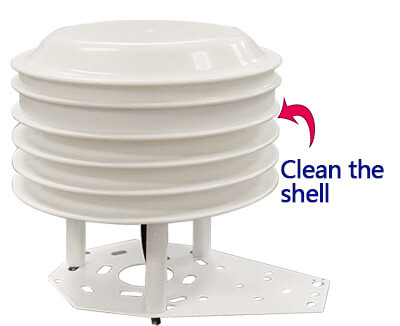
Weather station with wind sensor
The common structure of the wind speed sensor is a three-cup type. The wind cup is easily contaminated with sand or insect webbing during the working process, and long-term accumulation will cause movement restrictions, which will affect the reliability of the wind measurement data. Therefore, the surface of the wind cup should be cleaned regularly. Besides, after checking that the appearance is not damaged, the user needs to manually rotate the shaft to check whether there is any foreign matter stuck inside. If there is a foreign body jam, it needs to be disassembled and cleaned. This process requires professional technical support. You can contact us for help.
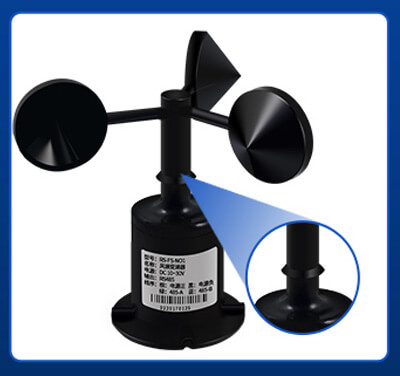
The important part of the wind direction sensor is the wind vane. Any blade obstruction or adhesion of insect fabrics will affect the accuracy of the measurement position. It is recommended that the user regularly wipe the surface of the wind vane with wet wipes or alcohol to ensure that there is no adhesion. Also, check if your weather vane can rotate freely. Compared with the wind cup, the turning resistance of the wind vane will be slightly larger. This slight resistance is to improve measurement accuracy. The wind direction sensor can be calibrated once a year to reduce the use error.
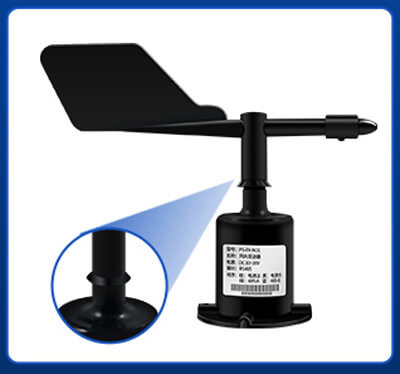
Weather station with rain gauge
The rain gauges used in weather stations are tipping bucket rain gauges, so the most common problem is the obstruction of the gutter. Sundries such as fallen leaves, insects, stones, feathers, etc. affect rainwater to enter the tipping bucket and cause measurement deviation. When maintaining the rain gauge, first clean the sundries on the top rain port, then check whether there are obstacles in other exit paths, wipe the rain gauge parts with a soft tissue or damp cloth, and finally check whether it is level during installation.
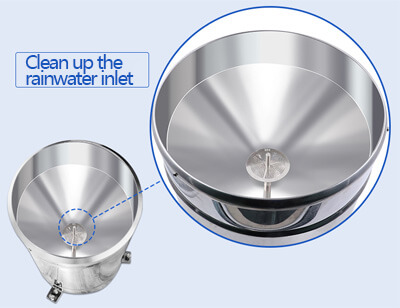
Weather station with uv sensor
To obtain accurate UV measurement results, please clean the photosensitive surface of the uv sensor regularly. Use a cloth to remove dust or debris that has accumulated on the lens or cover. At the same time, check whether the photosensitive surface of the sensor is perpendicular to the light source.
Weather station with rain and snow sensor
The rain and snow sensor is a measuring device that measures whether it is raining or snowing outdoors. It uses the sensor plate on the surface to measure rain and snow. Although the sensor has an internal heating function, which can effectively prevent the surface from freezing in winter, it is easy to accumulate dust on the surface after long-term use, so it is necessary to wipe the surface with a soft wet wipe regularly. Dust or other debris.
Weather station with solar radiation sensor
The measuring element of the solar radiation sensor is installed in a transparent waterproof case. To ensure accurate solar radiation measurement, the transparent case should be gently wiped with a clean and soft wet wipe during use to ensure that the sunlight is normally irradiated without obstruction.
Weather station with negative oxygen ion detector
The negative oxygen ion detector is usually installed in the waterproof box of the weather station together with the weather station host. The negative oxygen ion detector and the weather station host are not waterproof, so long-term use should check whether the waterproof box is leaking. Secondly, there is a vent at the bottom of the waterproof box, and the negative oxygen ion detector draws air through this vent to measure The number of negative oxygen ions. Therefore, foreign objects such as leaves, insects, smoke, and dust in the vents should be cleaned regularly.
Weather station with solar panel
The solar panels on the weather station can provide power to send the readings back to the console and need to be cleaned to generate sufficient, uninterrupted power. Use an antistatic or damp cloth to wipe all the materials on the solar panel to make sure they are as clean as possible. In order to extend the service life of the weather station battery, we put it in a special battery box. In bad weather, check if the box is in good condition to prevent weather or wild animals from damaging the box.
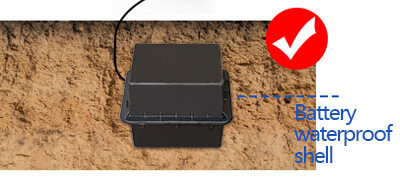
Weather station pole and wires
The sensor wiring of the weather station designed by our company is inside the pole, which greatly reduces the damage to the wiring caused by environmental factors and birds. Reduce the maintenance cost of the user on the weather station installation. Except for the inability to read the measured value and the wiring check, there is no need to maintain the wiring during normal use. You can check the cables once a year and make sure that certain mounting brackets, poles, columns, etc. are stable, vertical, and good, and the instrument is firmly fixed.
Weather station with soil sensors
The soil sensor of the weather station usually adopts two install methods: stainless steel probes are inserted vertically into the soil for measurement or the entire soil sensor is buried horizontally in the soil. When using the first installation method, regularly check whether the sensor is inserted into the soil vertically. If there is a large gap between the steel needle and the soil, you need to pull out the sensor and reinsert it into the soil. When using the second installation method, unless the sensor is damaged, frequent maintenance is not required.
Conclusion
Weather station maintenance is a simple and interesting task. It can not only extend the service life of weather station equipment but also enhance your understanding of the weather station’s multiple sensors. We hope this helps answer your questions about weather station maintenance. Different weather station brands and models have different maintenance frequencies and methods. In this regard, if you have any other questions, please feel free to contact us.











